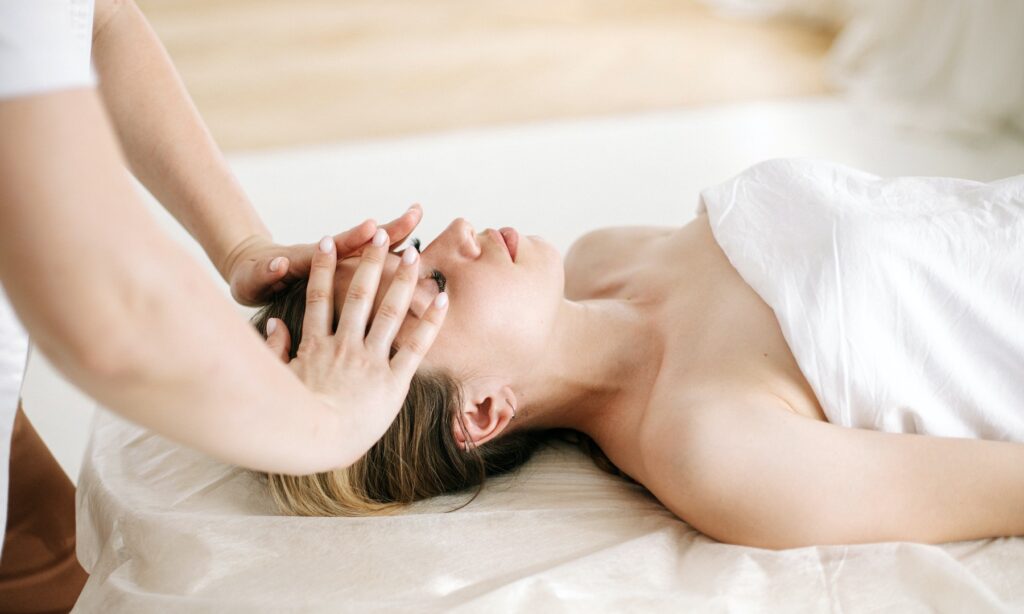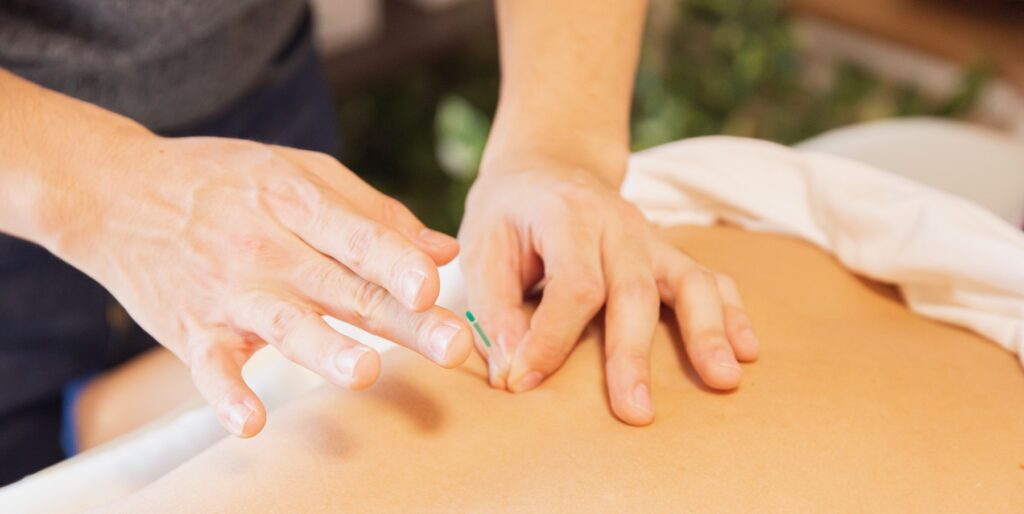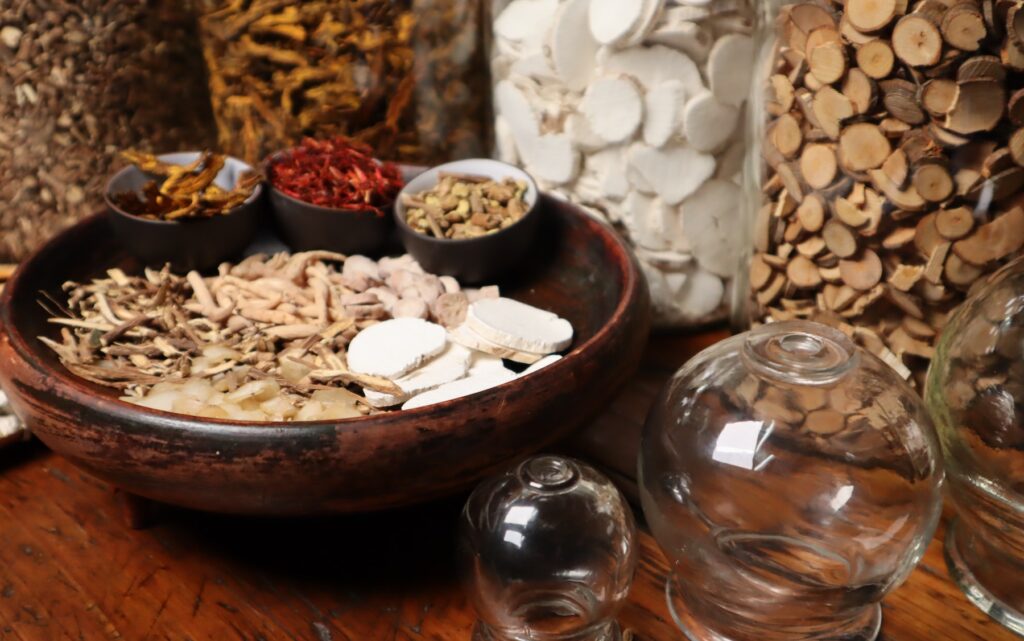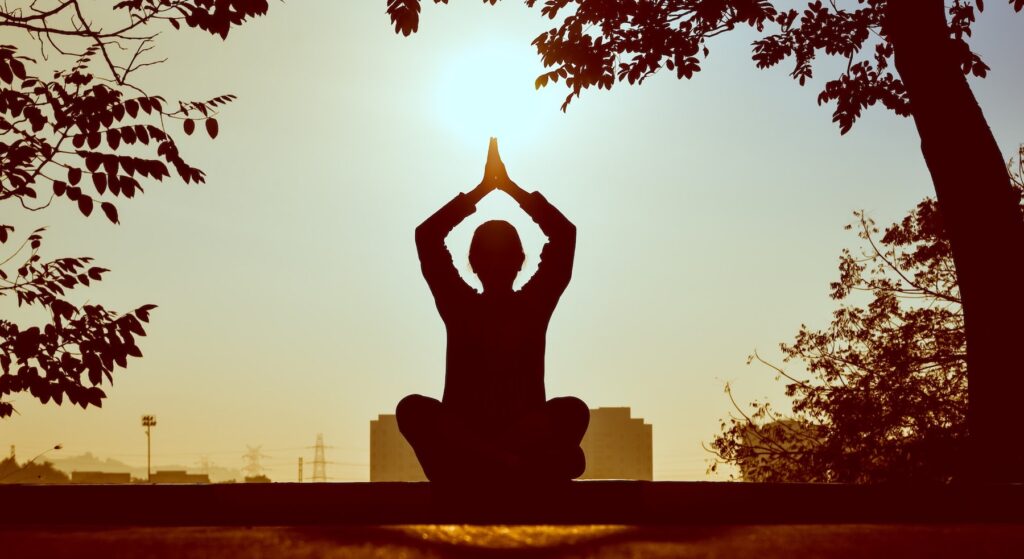The first time I received anything like a wellness treatment was on a tropical island. I was in my early twenties, and one of my best friends talked me into getting a massage—almost against my will. I thought massages are something for old people, and was much more interested in going for a swim or hanging out at the beach.
Little did I know. The massage was a completely transformational experience for me. I suddenly felt my body in ways I never felt before. I was so present and invigorated, full of life. I was able to move more freely, stood more upright, my muscles let go of tension I wasn’t even aware I had, and everything was somehow… effortless.
I was lucky with that experience, because this randomly picked massage therapist was highly experienced and did a great job. In the years that followed, I received hundreds of wellness treatments in countries all over the world, and studied various modalities myself.
Here, I want to share with you different wellness treatments, what to look out for, and how to determine which is right for you.
What Is a Wellness Treatment?
There’s no one-size-fits-all approach to wellness treatments. That’s why it’s important to find a modality and therapist specifically suited to your needs. Some treatments are more general in scope, while others are more specific to certain areas of the body. It’s also important to find a therapist who is comfortable working with you – some may be better suited for stress relief than weight loss or pain management. There are many different types of therapies that focus on restoring balance to the body and mind, and it’s important to find one that is right for you. With a little research and exploration, you’ll be on your way to restoring your health!
Types of wellness treatments
There are many types of wellness treatments out there, and it can be hard to decide which one’s right for you. To make things easier, consult with a healthcare professional or look online for reviews. Once you’ve narrowed it down, consider the following types of treatments: diet modifications, stress relief techniques, and physical activity regimes. For example, adding more fruits and vegetables to your diet can help reduce inflammation and improve your overall health. Furthermore, stress relief techniques like mindfulness meditation can help reduce anxiety and tension. In addition to these traditional treatments, there are also unique wellness treatments like reflexology, which uses pressure points on the feet to improve overall health and well-being. Making just one minor change to your lifestyle can have enormous benefits for your overall health and well-being!
Spa treatments
Looking for a spa treatment that is perfect for you? Start by understanding different spa treatments and their benefits. Many spas offer packages that include a variety of treatments, from facial treatments to nutrition advice, so it’s easier to find the one that best suits your needs.
Once you’ve decided on the type of treatment you want, consult with spa staff about what will work best for you. Ask them why you seek treatment and let them know your expectations from the experience. They’ll be able to give valuable advice based on their expertise dealing with different clients.
Moreover, don’t hesitate to ask friends or family members if they have any recommendations—even if you opt for a specific treatment modality, the experience you get from different practitioners might vary enormously. So if a friend of yours knows a great massage therapist, it’s worth trying them.
Massage & Bodywork

Massage and bodywork offer a variety of benefits that anyone can enjoy. From relieving tension headaches to boosting the immune system, there is something for everyone on the massage menu.
To find the right treatment for you, it’s important to consider your needs and preferences. Do you prefer a strong and vigorous massage to release muscle knots? Deep-tissue or Thai massage might be right for you. Or a gentle, slow, soft and relaxing massage, like an aromatherapy massage with essential oils? Do you want to work very targeted on specific areas of your body, like your neck, or do you want a full body massage? Try out different massage techniques until you find one that works best for you. Communicate openly with your therapist and give them a lot of feedback if you prefer a stronger or softer massage. What’s more, if you have any preexisting conditions, let them know to avoid health complications. Remember to always take time to relax after treatment—the integration phase after the massage also helps you carry over benefits into your everyday life.
Breathwork
Breathwork is one of the simplest way to relax and de-stress, and one that very few people ever start to tap into to improve their health. There are so many potential health benefits, and yet, because it’s “just breathing”, most people never dedicate themselves to building a consistent breathwork practice. There are many different types of breathwork, each with its own unique benefits:
- Holotropic breathwork
- Alternate nostril breathing
- Diaphragmatic breathing
- Box breathing
- Pranayama breathwork
- Wim Hof breathing
- Mindful breathing
- Rebirthing breathwork
- Vivation
- Somatic breathwork
Finding the right breathwork trainer who understands your needs can help you get the most out of your breathwork practice.
Although it may take a few tries before finding the right method for you, it is definitely worth exploring different options before deciding. You can also try some simple techniques at home to get started—there are plenty of helpful tutorials on YouTube.
Acupuncture

Acupuncture is a centuries-old Chinese treatment that uses fine needles to stimulate specific points on the body. It is believed to help improve overall health, and balance Qi (energy) flow in the body. Acupuncture can be used as part of a holistic approach to wellness care and has been shown to be effective in relieving chronic pain, stress relief, fibromyalgia, and respiratory disorders.
Acupressure
Acupressure is a massage technique that uses pressure and finger strokes to release tension from the body. It can be used for everything from stress relief to weight loss, and different techniques can be used for different parts of the body; head, neck, chest, etcetera. Acupressure is a great way to improve your wellbeing without having to go to the doctor or spend loads of money on treatments.
Cryotherapy
Cryotherapy is a type of wellness treatment that uses low temperatures to reduce inflammation and pain. It can be used on the entire body, e.g. with cryochambers or full-body immersion in ice water, or in specific areas like the face, neck, hands and feet through placing cold packs at different parts of your body. Cryotherapy is an excellent option for treating arthritis, sports injuries, inflammation, and other conditions, and has been shown to improve muscle recovery.
There are many cryotherapy centers around the world—make sure to check their reviews before signing up for a session.
Flotation Therapy
Floating or flotation therapy is an alternative therapy that involves lying in a sensory deprivation tank, or float tank, filled with a shallow solution of water and Epsom salt. The solution creates a buoyant force that allows the body to float effortlessly, free of gravity and external stimulation. It is believed that this environment helps to reduce stress, improve sleep, reduce inflammation, and promote feelings of relaxation.
John Lennon wrote he benefited immensely from using flotation tanks, and that it helped him overcome his heroin habit.
Nobel price winning physicist Richard Feynman loved his experiences in flotation tanks.
The podcaster Joe Rogan has been popularizing the use of flotation tanks in recent years, and called it “the most important tool I’ve ever used to developing my mind”.
Michael Chrichton, who authored Jurassic Park, was a big fan of using flotation tanks and said it helped him overcome writer’s block, and even bought his own tank.
Actor Jeff Bridges was a close friend with the inventor of flotation therapy, John C. Lilly and said: “The whole idea of the isolation tank is to see what happens to consciousness when you take away or eliminate the input into your senses, so you’re in a box floating in salt water – with 1,000 lbs of salt, so you’re very buoyant. You can’t see anything, your ears are underwater, and you can’t hear anything. And what does the mind do? It’s so active, and it’s constantly projecting, like a movie screen.” If it works for The Dude, why not give it a try?
Onsen
Onsen is a term used in Japan to refer to hot springs. It is a popular form of relaxation and recreation in Japan, where people go to hot springs to bathe and unwind. Onsen are often located in scenic locations, such as in the mountains or near the ocean, and are often associated with traditional Japanese inns called ryokan. Many onsen also have public baths, where people can go to enjoy the therapeutic benefits of the hot spring water.
Chi Balancing
Chi balancing is a technique based on traditional Chinese medicine (TCM). It helps to restore balance in the body by using gentle movements and deep breathing exercises. The treatment can be done at home using simple equipment and is suitable for all ages. Chi balancing has been used for centuries to help improve health and wellness.
Visceral manipulation
Visceral manipulation is a type of treatment that uses pressure and massage to improve the functioning of the digestive, respiratory, and reproductive systems. It can be used in conjunction with other treatments such as diet and exercise. There are a few types of Visceral Manipulation – Functional Visceral manipulation (FVM), Structural Visceral manipulation (SVM), and Myofascial release therapy (MFR).
FVM is generally used to treat issues such as IBS, diverticulitis, GERD, etc. SVM helps address pain related problems in areas like the neck or low back while MFR targets adhesions in muscles or fascia which can cause pain throughout different parts of the body.
Energy healing
If you’re looking for an alternative way to improve your health and wellness, energy healing may be the treatment for you. Some popular options include Reiki, Biofield energy healing, spiritual healing, therapeutic touch, and Qigong.
You can find an appropriate treatment by doing some online research. This will help you choose something that is best suited for your needs and preferences. You’ll also have the opportunity to speak with a practitioner about your treatment plan in order to make sure it’s as beneficial as possible for you.
Rehab & Addiction treatments
There are many options available for people who struggle with addiction. Some of these treatments offer short-term results, while others promise long-term success.
It is important to find a treatment that will work best for you and your lifestyle. Speak to a specialist about what kind of treatment is right for you, considering all the factors involved, such as age, health history, and past experiences with substance abuse.
Read reviews or ask other addicts if they have any recommendations before committing. Even better, if you know people who overcame addiction with the help of a particular treatment, ask them to share their experiences on their path to sobriety.
Ayurveda
If you’re looking for a holistic approach to health that goes beyond the traditional healing methods, then this ancient health system from India might be worth considering.
In the practice of Ayurveda, the body is seen as a complex unit composed of five elements: earth, water, fire, air, and ether. The energies of these elements are represented by three doshas—Vata, Pitta, and Kapha—which must be kept in balance for a person to be healthy.
Ayurvedic practitioners use various methods to restore balance among the doshas, such as dietary modifications, herbs, and lifestyle changes. Tridoshic balancing is a holistic approach to health that seeks to bring the three doshas into harmony. This approach involves identifying which doshas are out of balance, then making lifestyle changes and incorporating Ayurvedic therapies to bring them back into balance. Such therapies may include dietary changes, herbs, massage, yoga, meditation, and other forms of physical or mental exercise.
While Ayurvedic treatments work best when administered by an experienced practitioner, there are many types of remedies available that can be tried at home. Always consult with your doctor before starting any treatment regime though; Ayurveda is not without risks and no medication should be taken lightly.
Traditional Chinese Medicine

Traditional Chinese Medicine (TCM) is a holistic treatment approach that uses various treatments such as acupuncture, herbs and massage to restore balance in the body. It works by relieving pain or illness symptoms and treating chronic conditions like stress, anxiety and depression. TCM is often used to treat individual health problems and overall wellness, and can help.
Hypnosis
Hypnosis is a mental health treatment that has been found to be quite effective for stress relief, anxiety, depression and more. In contrast to stage hypnosis which is a tool of showmanship, hypnotherapy involves using the power of your mind in a more holistic way. This allows it to work better and help you reach your full potential.
A session with a therapist or hypnotherapist can help identify the root cause of any mental health issue and guide you towards the right treatment plan tailored specifically for you. You can also try self-hypnosis at home if this seems like an easier option for you.
Sound bathing
Sound bathing is a form of meditation that involves listening to sounds or music with the intention of inducing a state of relaxation and mindfulness. During a sound bath, participants may lie down and listen to a variety of soothing sounds, such as singing bowls, gongs, or other instruments. The idea is that the sounds can help to quiet the mind and promote a sense of calm and well-being. Some people also believe that sound bathing can have therapeutic benefits, such as reducing stress and anxiety, improving sleep, and increasing focus and concentration.
Family therapy
Family therapy is a type of treatment that uses cognitive behavioral family therapy (CBFT) as its foundation. CBFT helps families identify and resolve problems together by using specific techniques, such as problem solving, communication and conflict resolution. This can help improve the overall wellbeing of the family members involved.
Facial lymphatic drainage
Facial lymphatic drainage is a type of massage that promotes circulation and the drainage of excess lymphatic fluid, and helps remove toxins that lead to clogged pores. It is often used to reduce puffiness and swelling in the face, as well as to improve the complexion by increasing the skin’s ability to absorb and retain moisture. During the massage, the therapist uses a light, sweeping motion around the face and neck to stimulate the lymphatic system. This technique can be done on its own or as part of a facial treatment.
Yoga

The practice of yoga has been linked with many health benefits, including stress relief, relaxation and weight loss. Yoga can also help improve your mental health by reducing anxiety and depression symptoms. Many types of yoga are available to suit all levels of practitioner—from beginner to expert—so there’s a yoga class for everyone, and all you need is a mat and the time to practice.
Meditation
Meditation is an ancient practice that has been found to be remarkably effective in reducing stress and improving mental health. Activities such as mindfulness meditation help you focus on your breath and internal thoughts, replacing negative thoughts with positive ones. This can help reduce anxiety and depression symptoms while also increasing mindfulness and self-awareness.
Reiki
Reiki is an alternative healing technique where a practitioner places their hands on or just above a person’s body in order to transfer energy to them in order to promote healing. It is believed to be a form of energetic healing that helps to balance the body’s energy and promote a sense of wellbeing. It is thought that the energy used in Reiki helps to relax and reduce stress, reduce pain, and improve physical and emotional health.
Equine Experiential Therapy
If you’re looking for a treatment that can help address mental health issues, consider equine experiential therapy. EET is a highly effective treatment for anxiety, depression and other mental health issues that uses horses to help people connect with their feelings and work through them. There are multiple types of EET available, each with its own benefits – so it’s important to find the right one for you.
Detoxes and cleanses
Detoxes and cleanses are a type of diet that involve consuming special foods and drinks, such as juices, to help rid the body of toxins. These diets are often used to help with weight loss, as well as to improve overall health and wellness. Detoxes and cleanses involve a limited diet of fruits, vegetables, and other natural ingredients to help flush the body’s system of toxins. In some cases, supplements or even fasting may help with the detoxification process.
Red Light Therapy
Looking for a wellness treatment that can improve your skin, hair and nails? Red light therapy may be the solution you’re looking for. This popular treatment uses light to target different areas of your body – from wrinkles to acne scars. Red light therapy involves exposure to low levels of red light wavelengths, typically 660–850 nanometers (nm). This type of light is thought to interact with the body’s own healing processes in order to produce a range of beneficial effects. It is safe and pain-free, making it perfect for busy people who want fast results without any fuss. Plus, the treatments are relatively short, so they don’t take up too much time.
What are the benefits of different wellness treatments?
From improved physical and mental health to increased energy levels and blood flow, decreased stress levels, a stronger immune system and better sleep patterns, there’s something for everyone. However, it’s important to find the treatment that suits your needs. This can be done by researching different types of wellness treatments and figuring out which one is best for you. After that, it’s simply a matter of trying out the treatment and see the benefits for yourself!
Alleviates pain
There are numerous wellness treatments that can help alleviate pain without the need for pharmaceuticals. This is often a holistic approach, addressing the root cause of pain instead of only treating its symptoms.
Moreover, treatment often involves relaxation techniques, which helps reduce stress and tension and release any built-up bodily aches and pains. In short, wellness treatments offer relief from both physical and emotional pain – making them an ideal choice for those looking for a holistic approach to managing their discomfort overall.
Boosts immunity
In addition to pain relief, wellness treatments can also improve overall immunity. This is due in part to the increase in blood flow and circulation that treatment often brings about. Plus, treating inflammation with wellness treatments has been shown to work synergistically with other conventional healing modalities such as vitamins and antibiotics – strengthening your immune system even further.
In addition to that, wellness treatments can help improve sleep patterns, which restores energy levels and promote a healthy mindset overall.
Increases energy levels
One of the benefits of wellness treatments is that they often result in increased energy. This not only improves physical wellbeing but mental wellbeing as well – making treatment an ideal choice for those who are looking for more balanced focus and concentration. In addition, improved blood flow and circulation also contributes to an increase in mental clarity and alertness – essential qualities if you want to stay productive throughout the day.
Supports mental health
Mental health is an important topic that deserves attention and care. That’s why wellness treatments that improve mental well-being are so great – they can have a positive impact on your emotional wellbeing too!
Some of the best ways to boost your mental health include reducing stress, improving sleep quality, boosting moods, and relieving pain. Some examples of such treatments include meditation, yoga, acupuncture, massage therapy etc. Whichever wellness treatment you choose to try out – make sure you research it first to ensure its benefits match your needs and personal preferences.
How to choose the right wellness treatment for you?
When it comes to wellness treatment, there is no one-size-fits-all approach. That’s why it’s important to research different options and find a treatment that focuses on relieving your symptoms, rather than treating the cause of the problem. Many treatments available today are safe and non-invasive, making them perfect for people with a busy lifestyle. Additionally, many wellness treatments focus on improving overall wellness rather than a single area. So, whether you’re looking to reduce stress, improve mental health, improve sleep, or boost your energy levels, this comprehensive guide will help you find the right wellness treatment for you!
Conclusion
Wellness treatments are essential for maintaining good health and improving overall wellbeing. However, choosing the right treatment can be a daunting task. In this article, we have outlined the different types of wellness treatments available and provided a comprehensive guide on how to choose the right one for you. For serious health conditions, always seek the advice of a trusted medical expert and look for evidence-based therapies. It’s worth having at least one consultation before committing to any treatment modality.
